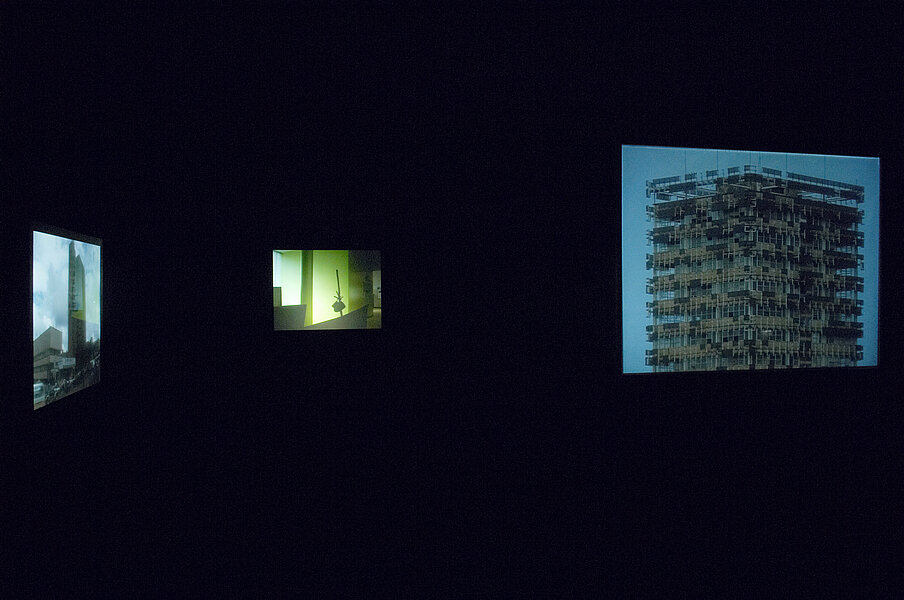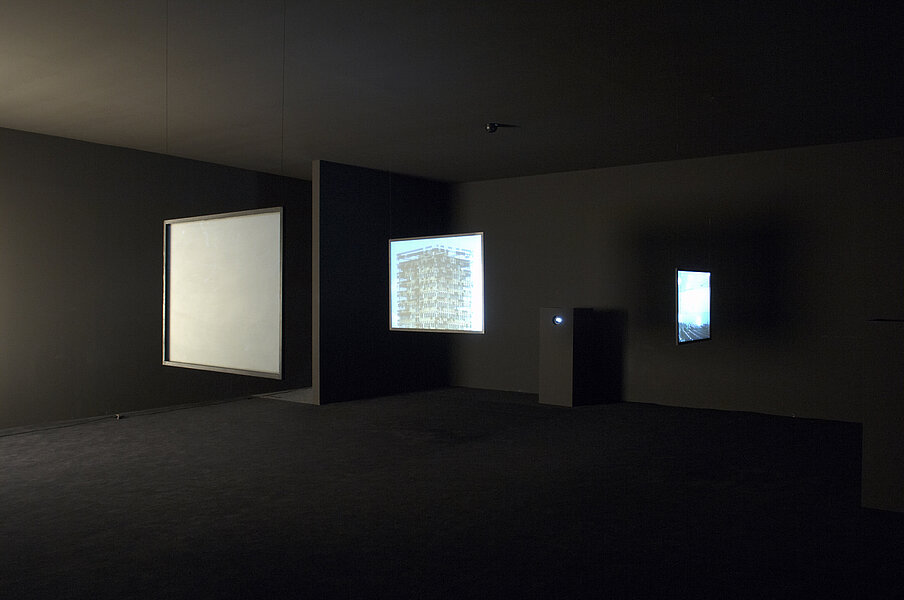
Pumhösl, Florian
Entwurf für einen Raum mit mehr als einer Videoprojektion
2001
| Object description | 3-channel video installation, looped, color, silent |
|---|---|
| Object category | Medien-Video |
| Dimensions |
Objektmaß:
height: 90 cm,
width: 126 cm,
depth: 1,5 cm,
height: 96 cm,
width: 73,5 cm,
depth: 1,5 cm,
height: 74 cm,
width: 57 cm,
depth: 1,5 cm
|
| Year of acquisition | 2004 |
| Inventory number | MAV 7/0 |
| Creditline | mumok - Museum moderner Kunst Stiftung Ludwig Wien, erworben mit Unterstützung von Telekom Austria |
| Rights reference | Pumhösl, Florian |
| Further information about the person | Pumhösl, Florian [GND] |
| Literature |
dwellan. Exhibition of contemporary video art CROSS-BORDER.FOTOGRAFIE UND VIDEOKUNST AUS DEM MUMOK WIEN Why picture now/Fotografie, Film, Video, heute |
“‘Proposal for a Space with More Than One Video Projection’ is a selective city portrait; most of the featured architecture is from the mid-twentieth century. The three video sequences are projected simultaneously on three monitors spread around the room, a cinema-like fixed viewing angle is not identifiable. Uganda’s current capital Kampala was founded in 1893 and from 1894 through 1962, it was an English protectorate. This period of Colonial rule left behind a strong social and ethnic separation of the urban structure. The first systematic urban development plans from 1929 focused on the business and administrative center. Many of the prestigious buildings designed by a local firm of architects could be considered as significant examples of an African modernist style in the transition from colonialism to independence. In 1945, the German architect Ernst May was commissioned by the government of the protectorate to draw up a general plan for the expansion of the city. May designed types of house for Africans, Asians, and Europeans, graded by income, requirements, and residential areas. After the expulsion of Uganda’s Asian population by Idi Amin, their houses, in a style inspired by Le Corbusier, were taken over by African Ugandans. In 1951, May designed the Uganda Museum (now the Uganda National Museum), as well as a residence for the curator. During the civil war of the 1980s, it was plundered several times; having been completely renovated, it is now about to be reopened.” (Florian Pumhösl)
© mumok – museum moderner kunst stiftung ludwig wien

